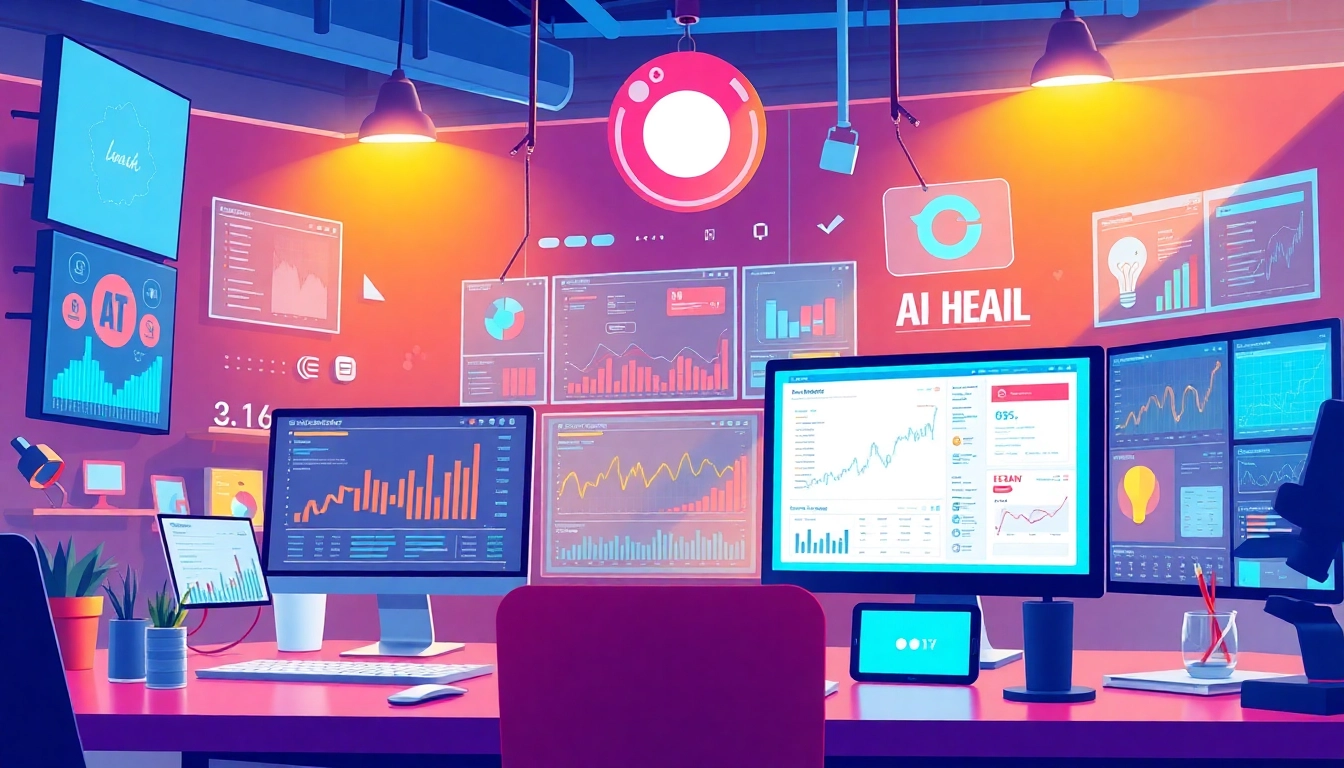Understanding AI Outreach Agents
Definition and Purpose
AI outreach agents are advanced technological tools designed to streamline sales processes by executing repetitive and time-consuming tasks on behalf of sales representatives. These AI-driven systems are capable of automating various aspects of outreach, allowing sales teams to focus on high-value activities such as nurturing relationships and closing deals. Their primary purpose is to enhance the efficiency of sales operations by taking care of redundant tasks that can bog down productivity.
For businesses looking to adopt an innovative approach to sales, AI outreach agents present a viable solution that can significantly enhance workflow efficiency and efficacy, thus maximizing revenue potential.
How They Function in Sales
AI outreach agents function through complex algorithms that can analyze large volumes of data to understand customer behavior, preferences, and trends. By leveraging artificial intelligence and machine learning, these agents continuously learn and improve their responses and actions. This dynamic capability allows them to schedule meetings, send personalized follow-ups, and handle inquiries with minimal human intervention.
A key aspect of their operation is integrating seamlessly with existing CRM systems and communication platforms. This integration ensures that sales teams can maintain visibility and accessibility to all interactions and data without the need for extensive manual entry, drastically reducing the workload.
Benefits for Sales Teams
The benefits of implementing AI outreach agents within sales teams are multifaceted. One significant advantage is the automation of mundane tasks such as data entry and follow-up emails. This autonomy frees up valuable time for sales reps to engage with prospective clients in more meaningful ways. It also enables them to prioritize high-potential leads, ensuring that resources are allocated efficiently.
Additionally, AI outreach agents provide data-driven insights that empower sales teams to make informed decisions. By analyzing customer interactions, these agents can suggest the best times for outreach, the nature of messaging that resonates with specific audiences, and various strategies for optimizing sales pitches. Ultimately, these agents enhance operational effectiveness, drive performance, and elevate overall sales outcomes.
Key Features of Effective AI Outreach Agents
Automation of Repetitive Tasks
Effective AI outreach agents are designed to automate repetitive tasks that typically consume a significant portion of a salesperson’s time. Tasks such as scheduling meetings, sending follow-up emails, and even contacting leads through various platforms can be performed without human intervention. Automation not only increases efficiency but also minimizes the likelihood of human errors during critical engagements. For example, an outreach agent can automatically send personalized emails to hundreds of leads based on pre-defined templates, tailored to specific audience segments.
Data-Driven Decision Making
Data-driven decision-making is at the heart of AI outreach agents. These tools utilize vast amounts of customer data to provide insights that shape sales strategies. By analyzing patterns from previous outreach efforts, agents can predict which tactics are most likely to succeed. For instance, if a specific email subject line resulted in higher engagement rates, the AI can recommend its future use. Over time, this contributes to continually enhanced engagement strategies, leading to improved lead conversion rates and increased sales productivity.
Seamless Integration into Workflows
For any organization to realize the full potential of AI outreach agents, seamless integration into existing workflows is essential. Most effective agents are designed to integrate with popular CRM platforms, marketing automation tools, and communication channels like email and social media. This ensures that sales teams can work within a familiar system while benefiting from the intelligence and capabilities that AI provides. The integration allows for a smooth transition for sales teams as they adopt these technologies, fostering acceptance and encouraging utilization.
Implementation Strategies for Businesses
Choosing the Right AI Outreach Agent
When selecting an AI outreach agent, businesses must consider various factors to ensure the solution aligns with their specific needs. Key considerations include the agent’s ability to integrate with existing tools, its automation capabilities, and its machine learning proficiency. Evaluating vendor expertise, customer support, and user reviews can also provide insights into the agent’s effectiveness and reliability.
Steps for Integration
Once a suitable AI outreach agent is selected, effective integration becomes crucial for operational success. Follow these steps for a smooth integration process:
- Assess Current Systems: Evaluate existing tools and workflows to understand the integration points for the new AI agent.
- Data Preparation: Clean and organize any existing data the AI will utilize to ensure maximum effectiveness.
- Setup and Configuration: Work with the vendor to configure the AI’s settings according to business requirements.
- Training Users: Provide comprehensive training for the sales team on how to leverage the new tool effectively.
- Monitor Performance: Regularly track the agent’s performance and adjust configurations where necessary.
Best Practices for Usage
Once implemented, there are several best practices that organizations should follow to maximize the benefits of their AI outreach agents:
- Regular Updates: Keep the AI updated with the latest market trends and customer data to improve its performance.
- Feedback Mechanisms: Establish a system for users to provide feedback on the AI’s performance which can then inform adjustments and improvements.
- A/B Testing: Utilize A/B testing to determine which strategies yield the best results and refine the AI accordingly.
- Maintain Human Touch: While AI can handle many tasks, ensure that there is still a human element in major interactions to enhance customer relationships.
Measuring the Impact of AI Outreach Agents
Key Performance Indicators
Businesses must establish clear key performance indicators (KPIs) to assess the impact of their AI outreach agents accurately. Important KPIs include:
- Response Rates: Measure how many prospects respond to outreach efforts driven by the AI agent.
- Lead Conversion Rate: Analyze the percentage of leads converted into clients after engagement with the AI platform.
- Time Saved: Calculate the amount of time freed up for sales reps to focus on higher-value activities.
- Overall Sales Growth: Track changes in overall sales performance pre and post-AI implementation.
Feedback Mechanisms
Implementing feedback mechanisms is essential in measuring the effectiveness of AI outreach agents. Sales teams should regularly assess the performance of the AI in relation to their goals and objectives. This can include automated reporting features that provide insights into engagement metrics or direct input from users regarding ease of use and effectiveness. Utilizing feedback will help fine-tune the AI’s operations to better serve both the sales team and customers.
Continuous Improvement Strategies
Continuous improvement should be a core strategy for any business leveraging AI outreach agents. This involves regularly updating the algorithms based on new customer data, adapting to changing market conditions, and including lessons learned from past outreach efforts. Conducting regular training sessions and workshops can also help teams stay aligned with best practices and innovative strategies, ultimately ensuring that the AI agent remains a valuable asset in the sales process.
Future Trends in AI Outreach Agents
Advancements in Technology
As AI technology evolves, the capabilities of outreach agents are expected to expand significantly. Future trends may include advancements in natural language processing, allowing AI agents to engage in more sophisticated conversations with prospects. Moreover, improvements in machine learning algorithms will enable agents to automate complex tasks, analyze even larger data sets, and generate hyper-personalized interactions, enhancing the overall customer experience.
Predictive Analytics and AI
Predictive analytics is likely to become a central feature of future AI outreach agents. By combining historical data with predictive models, these agents can foresee prospects’ behavior and tailor outreach strategies accordingly. This proactive approach can greatly improve lead nurturing efforts, as agents will be able to identify timing and messaging that resonates best with potential clients.
Expanding Roles in Business Operations
The role of AI outreach agents may expand beyond sales alone to encompass customer service, marketing, and other business functions. This cross-functional capability allows businesses to create a cohesive customer journey that integrates various touchpoints, thus enhancing overall brand interaction. By harnessing the power of AI across departments, companies can streamline operations and improve customer satisfaction, leading to stronger loyalty and repeat business.



